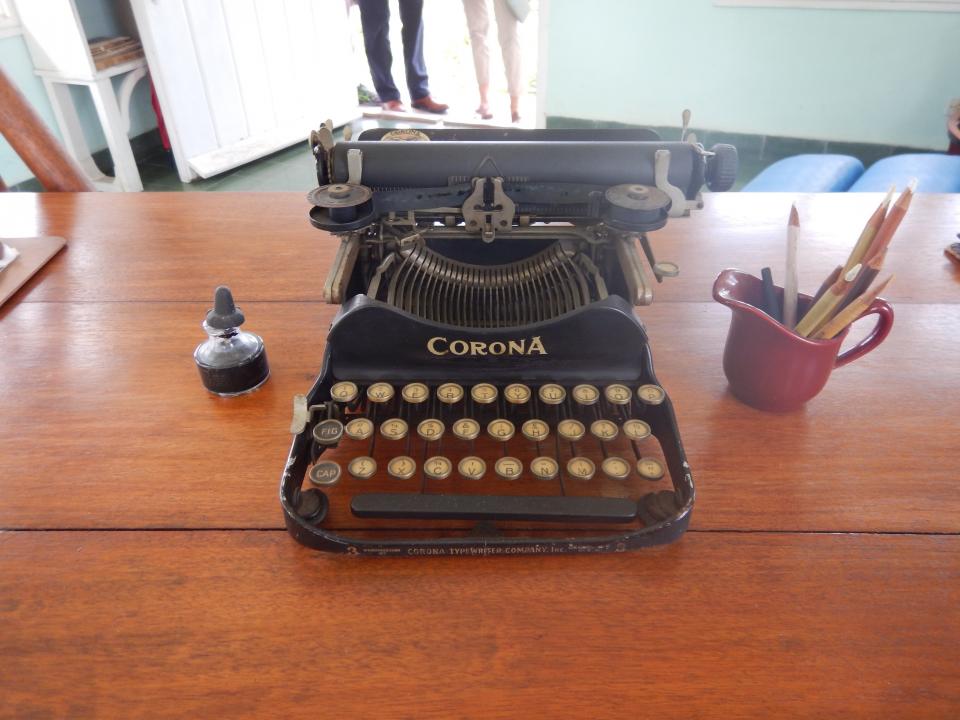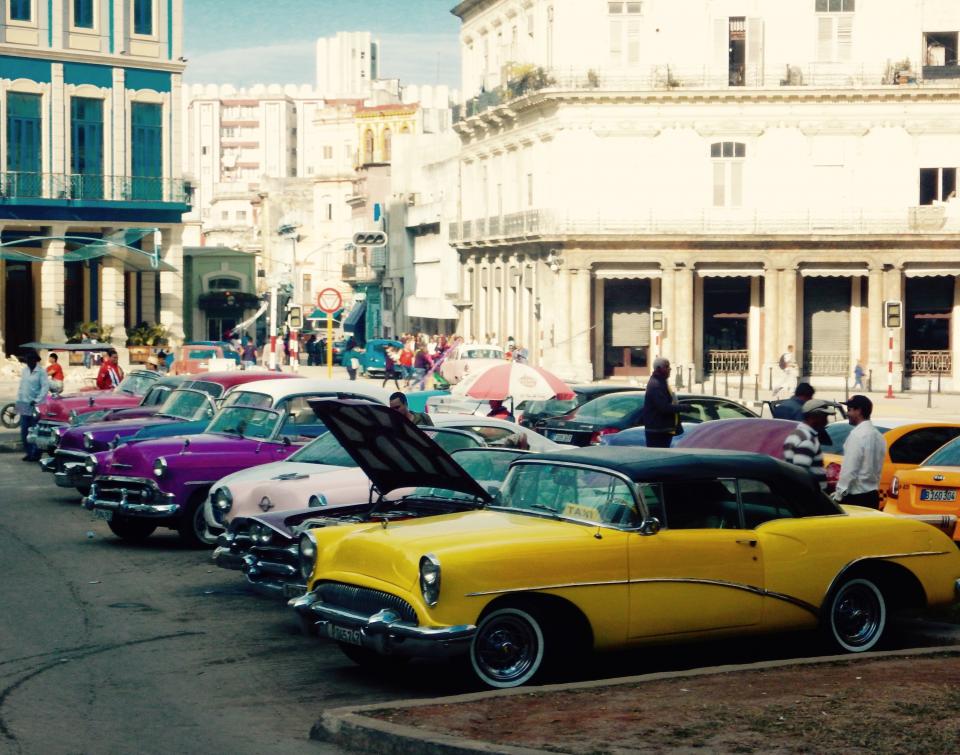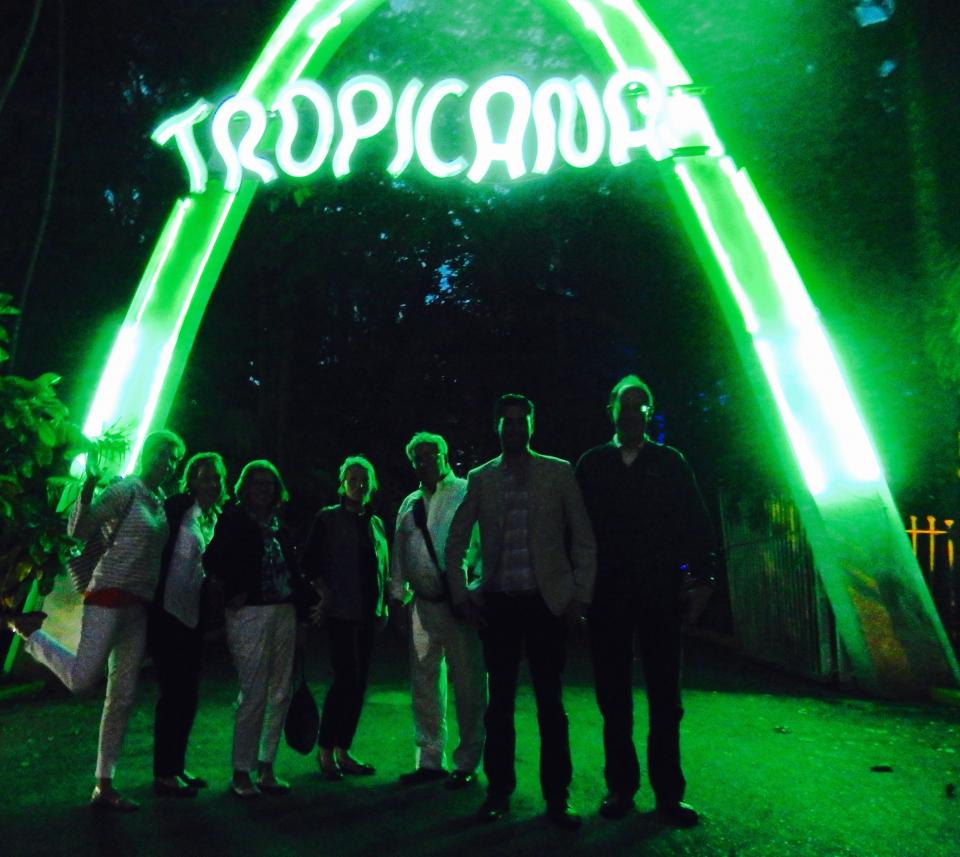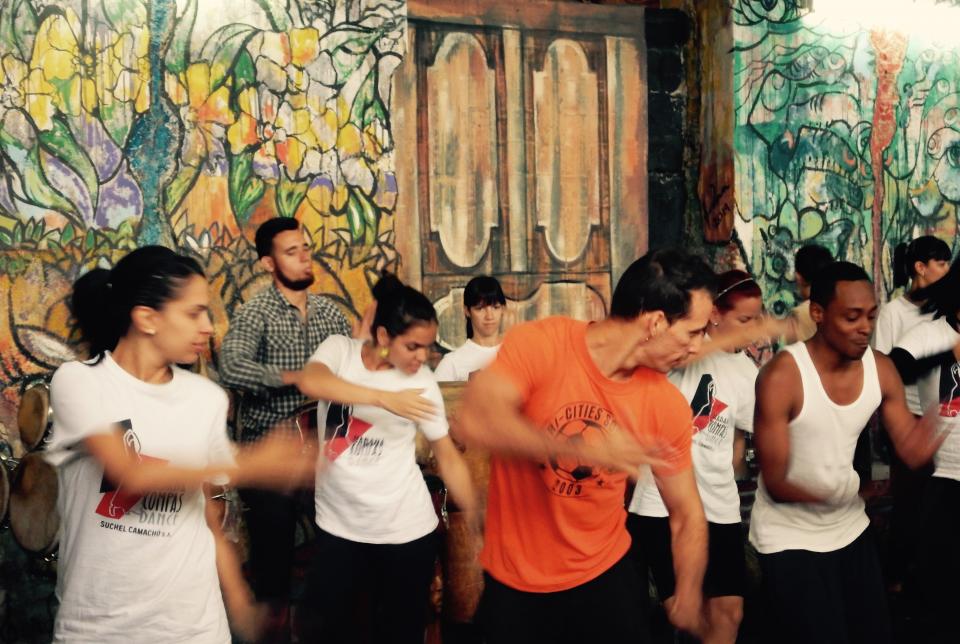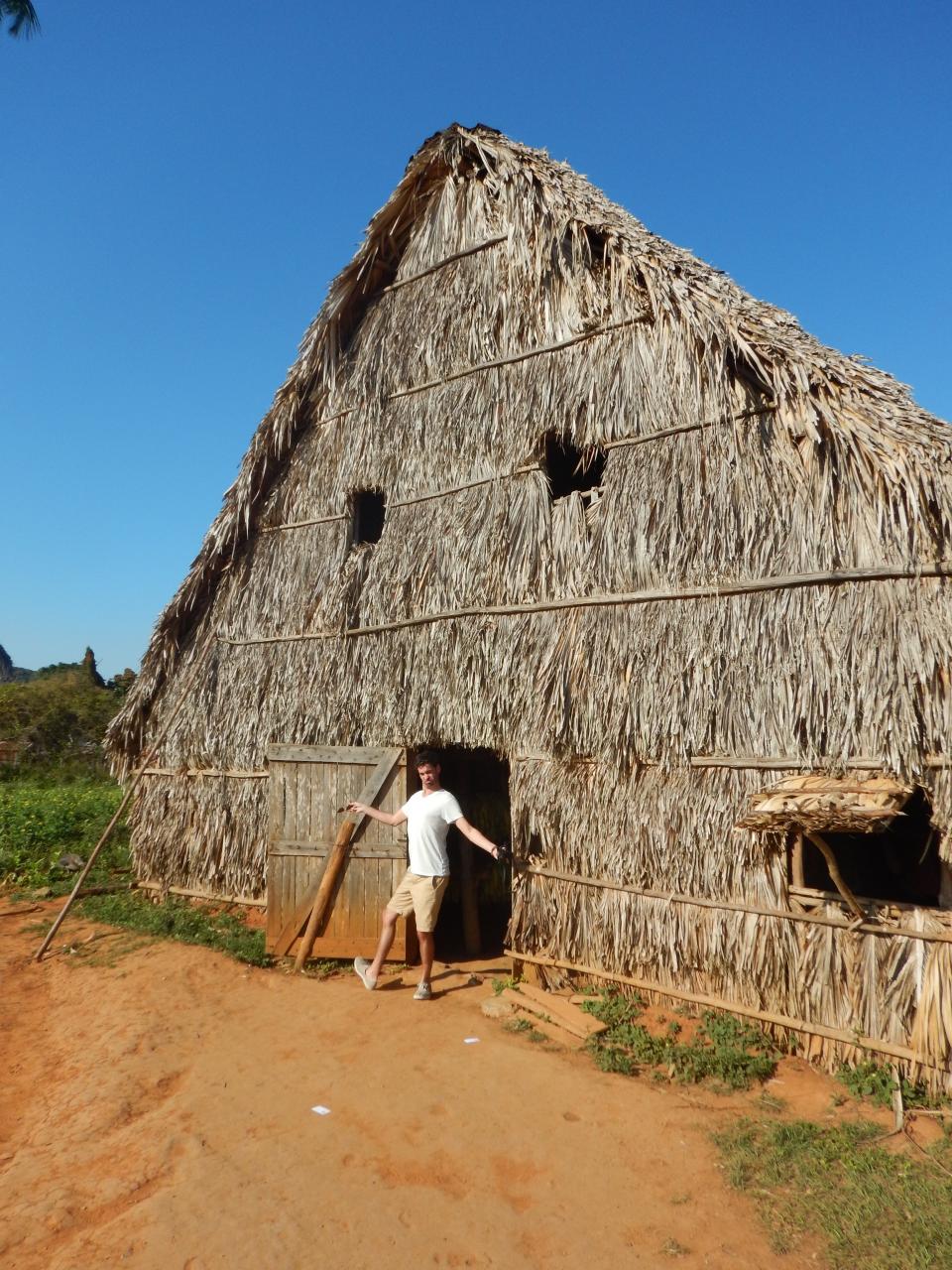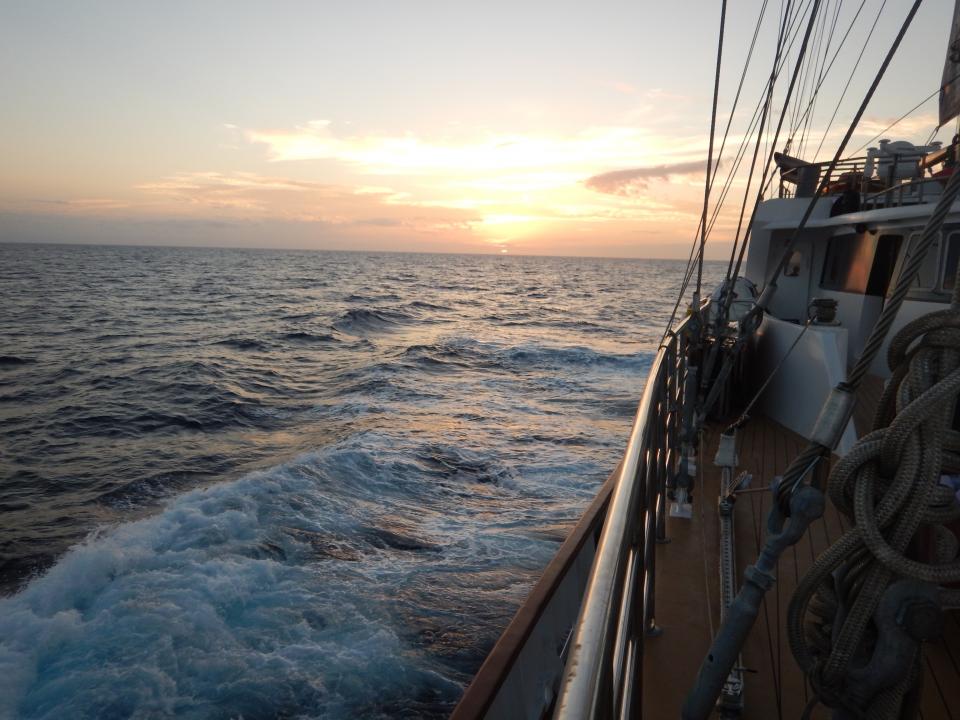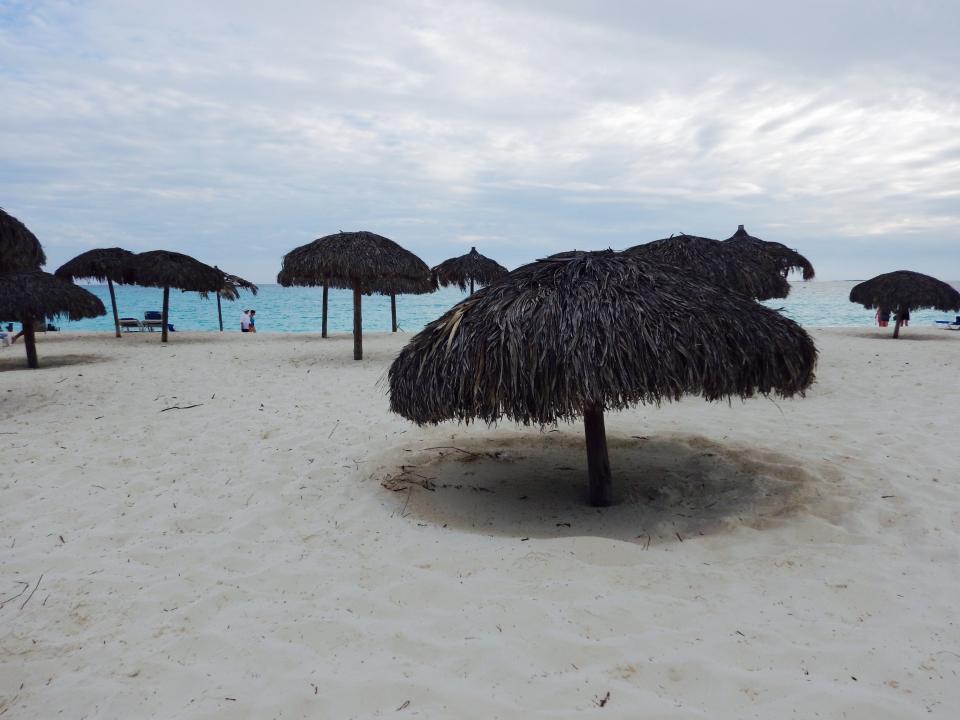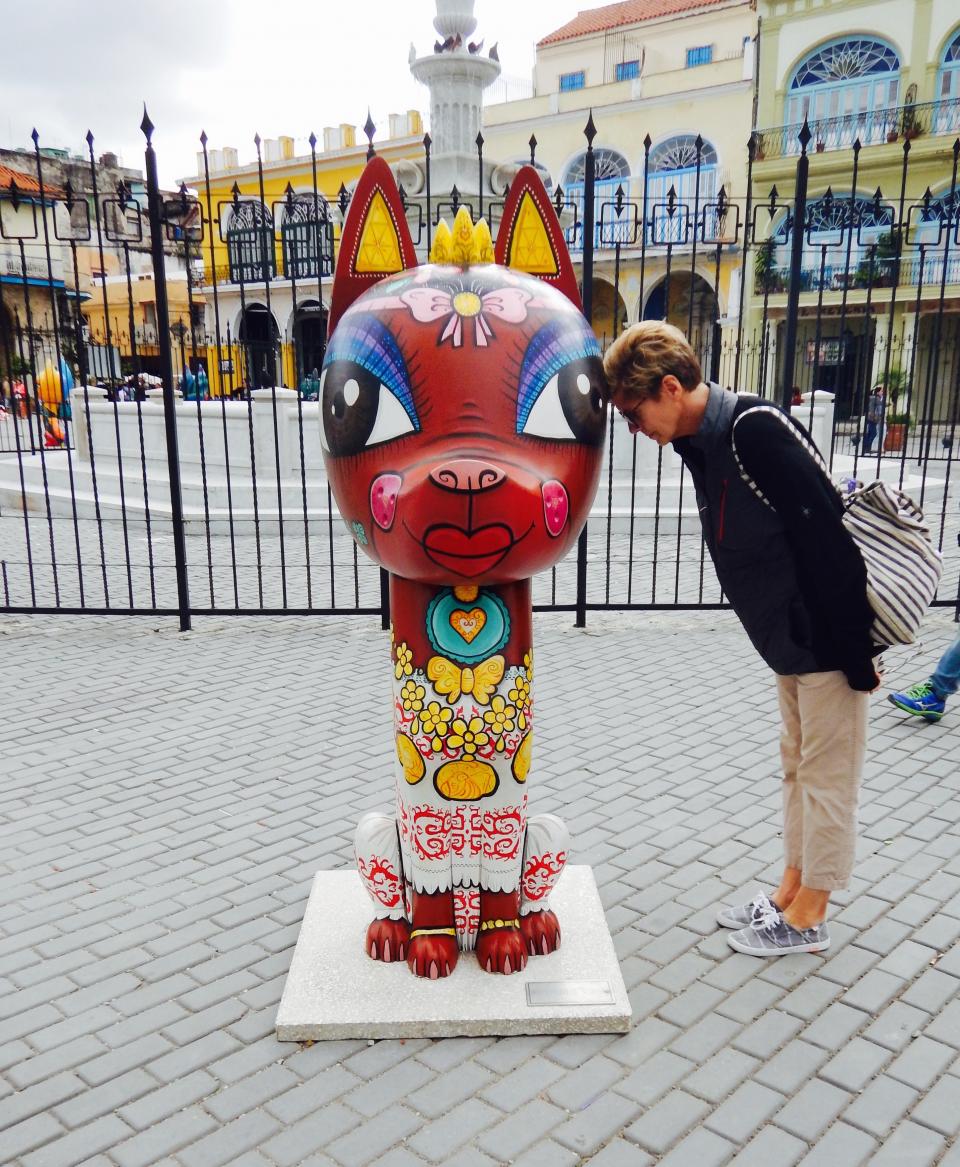By Sandy- February 27- March 06, 2016
When you travel to Cuba these days, you really need to put your head around the fact that Cuba is only 90 miles off the coast of Florida. The journey seems much much longer due to the hoops one must still jump through to get there. Yes, it is easier to travel to Cuba than a few years ago, but one must still obtain a special visa like the one we had, the “People to People Exchange”. Ever wonder what happened to Eastern Airlines? They are now the charter airline from Miami to Cuba and their on time record is about the same as when we flew them in the 70s to visit Grandma. Checking in for the flight, I was amazed to see so many people checking in with tires. Yep, stacks of car tires. Did I miss something on the packing list? The flight was super short, of course, and when we landed in Havana we not only stepped back in time 50 years, but also entered our “People to People” bubble as we boarded our Chinese made bus. Being on this type of Visa meant that we had to have pre-determined cultural exchanges each day. Most of these were delightful and not to be missed. In Havana, we all loved visiting the Havana Dance Company, an energetic group of young dancers and drummers who reminded me of Stomp. We loved Casa Fuster, an ever evolving mosaic art installation which reminded me of Burning Man. Hemingway’s home was our introduction to the first of many many rum drinks. You could plainly see why Hemingway loved Cuba. He had a terrific set up high in the hills outside Havana, with a home that looked straight out of Africa. From his tower perch, with a bottle of Santiago and a smoldering Cubano close at hand, he penned such masterpieces as The Old Man and the Sea and For Whom the Bell Tolls.
Our first day was very long having risen at 3:30am for our mystery charter and not boarding the boat until late afternoon. We did have a delightful lunch on a rooftop restaurant in Old Havanaand got some time to explore. On board the luxury sailing yacht, Panorama II, we met our lovely Greek crew and Indonesian staff, who took great care of us. The boat stayed docked in Havana for a couple days and this was our hotel. We were within walking distance of some great neighborhoods although it took some time to get off the boat each time and go through the ‘security process’. One thing that Cuba boasts is that everyone is employed. So, one guy would look at your passport, another guy would look at a list for your name, another guy would give you a disembarkation card, another guy would put your day bag through the scanner, and on and on and on. We were just a small vessel so I was wondering what happens when a big cruise ship pulls in.
Walking around Old Havana, you really get a sense of how magnificent this place. The cobble stoned streets and colonial buildings painted in the vibrant palette of the Caribbean are gorgeous. It’s quite a contrast to the Soviet functional buildings with no style points and dilapidated, crumbling old Colonial buildings that have slowly disintegrated over the decades due to lack of money. And then there’s the cars! I didn’t expect to see so many but they are everywhere and wonderful. It made me miss my dad who would have known every model of these old Buicks and Chevrolets in a rainbow of colors and all still miraculously plugging along. It goes to show you what magical mechanics the Cubans are as they’ve had no replacement parts for half a century but have managed to keep these beautiful cars up and running. Most of these cars are now taxis and when you get in, you can see the make shift parts that keep these rattling old buckets together. I was happy to be on this trip with my sister and her family. My nephew speaks fluent Spanish and was my soulmate as far as exploring the real Cuba. We would hop in one of these old cars and go on an adventure every chance we got. Speaking to the drivers and locals in the dive bars, we heard many tales of failed attempts to enter the US illegally and what the Cubans think about the Americans coming.
Everyone was excited that our American president and family were soon to visit. We got the sense that overall the Cubans are happy happy happy to have us coming. Lifting the embargo, which has really devastated the Cuban people over the decades, is high on the wish list. Although other nationalities have been coming to Cuba, the local people like how most Americans really experience a country. We try the food, learn about the culture, attempt the language, meet the people…it would seem that others come to the country to mostly soak up the sun and the rum. Everyone is worried that McDonalds and Starbucks will be on every corner, so let’s hope that doesn’t happen. It will be interesting to travel back to Cuba in a few years. Right now I only saw one of those statue guys you see all over Times Square, painted to look like a pirate, looking for money to have your picture taken with him. The local free range dogs were totally blowing his cover. There will probably be a lot more of these opportunists to come.
Travel to Cuba is a work in progress. The Panorama II itinerary was originally supposed to be a sailing trip around Cuba, which I was super excited about. The trip itinerary was changed just before we arrived so that we would not be sailing around the SW corner of Cuba from Havana to Maria La Gordo and taking the bus instead. Waaahhhh. The change was made so that we would see more of Cuba’s Vinales countryside and the last 2 trips on the boat were pretty rough on the passengers. So, we crossed Cuba by bus and stayed at a Soviet block style hotel for one night which was quite an eye opener. I imagine if you traveled to North Korea you would have a similar experience. “Thank god for rum”, we toasted over canned salty spaghetti under fluorescent lighting.
One of the brighter moments during these two days was an amazing lunch at a local farm. One of the plusses of Cuba being ditched by both the USA and the Soviet Union, was their inability to buy pesticides. Thus, all the farming in Cuba is done old school style with ox and plow, and organic. Cuba invented the ’farm to table’ fad from necessity. The food was fresh and delicious everywhere we went. We stopped at a tobacco plantation and learned to roll Cubanos in the drying house. Along the way, we stopped briefly at a school to meet the kids and hand over the much appreciated school supplies which some of us had brought from home. We did a short, but informative, nature hike at Guanahacabibes National Park and then we rolled into Maria La Gordo and onto the boat.
At last, we were under way and under sail to Cayo Largo where we got to do some great snorkeling and hit the beach. Our next stop was the beautiful town of Trinidad, a world UNESCO site built during the sugar and slave trade days in the 19th century. Horse drawn carts clip clap along the labyrinth of cobble stone streets here. This was a great town to wander around taking in the Spanish colonial homes, churches and open plazas. After a wonderful lunch here, my partner in crime and I took off in a local old taxi to explore the countryside and ended up at the lovely Ancon Beach.
Our final port was the colonial city of Cienfuegos, a pretty waterfront town with a French vibe. This was once a bustling and prosperous center for the sugar, coffee and tobacco trade. This UNESCO site is known as the Pearl of the South with its preserved French flavor mixed with Caribbean feistiness. A highlight here was a ‘People to People’ exchange with the local choir who performed beautifully. On the way to the airport we visited the mausoleum of the Castro brothers’ pal, Che, whose likeness appears everywhere in Cuba.
Overall, I loved Cuba—the warmth of the people, the mojitos, the rhythm of the music and dance, the beautiful countryside and quaint towns, and the cars! It will be interesting to see how Cuba emerges into the 21st century. We can only hope that it’s done delicately so Cuba’s unique flare and heritage is preserved while giving the lovely people of Cuba much needed change.
